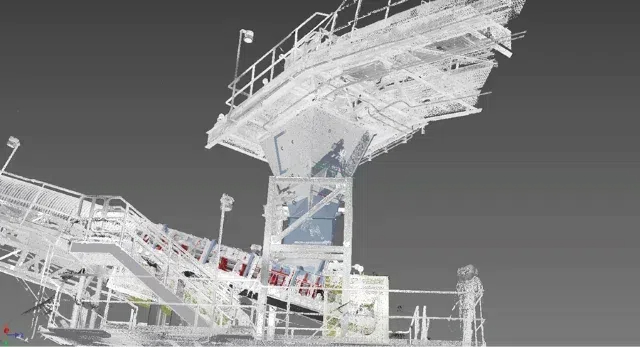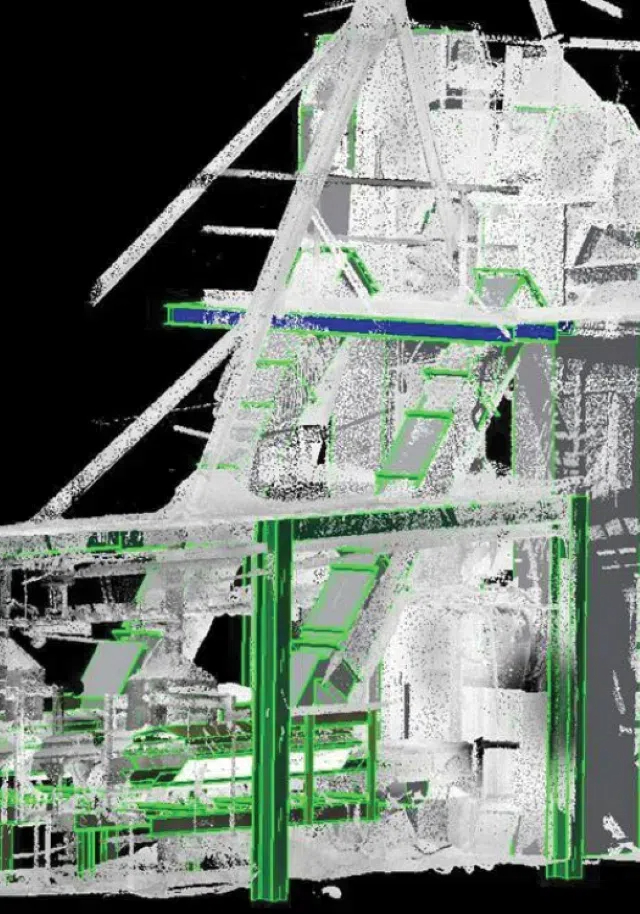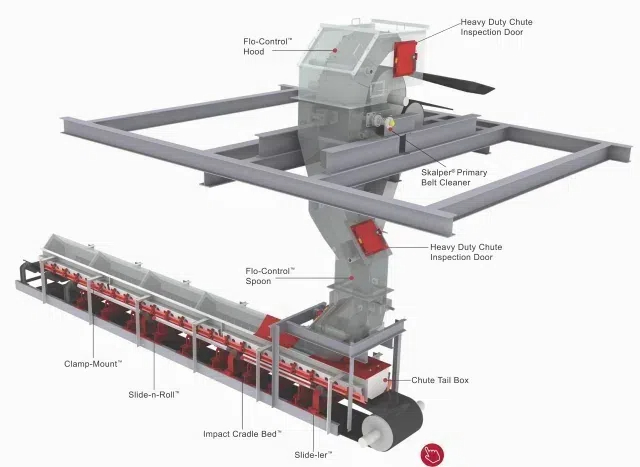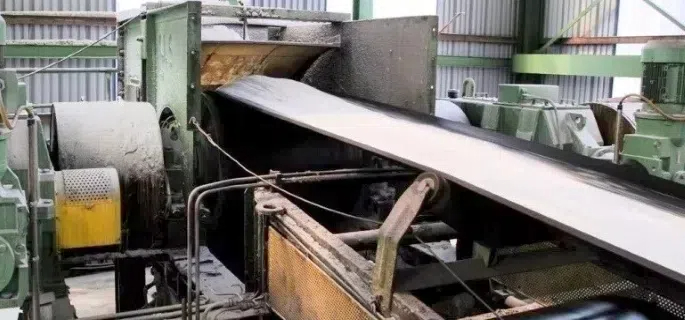Belt Conveyor Chute Design: How to Design and Considerations
In the realm of belt conveyor chute design, the Chute Design Handbook PDF and Transfer Chute Design Manual PDF serve as indispensable resources for engineers and operators. These documents offer comprehensive insights into optimizing material flow within conveyor systems. Understanding the principles outlined in these manuals is vital for achieving seamless integration of chute designs into conveyor systems. Moreover, a thorough overview of chute design calculations is crucial. These calculations ensure that the design meets the specific requirements of the conveyor system, facilitating efficient material transfer and minimizing operational disruptions.
What is the Crucial Role of Belt Conveyor Chute Design
In the field of material handling, the design of conveyor transfer chutes is critical for the efficient movement of bulk materials. These chutes are essential components within conveyor systems, providing a seamless transfer of materials from one conveyor belt to another. Understanding and optimizing the function of conveyor transfer chutes is vital for minimizing operational disruptions and enhancing overall system efficiency.

Defining Conveyor Transfer Chute
A conveyor transfer chute serves as a specialized pathway for depositing bulk materials onto a conveyor belt. Its primary function is to facilitate a smooth and controlled transfer of materials between different parts of a conveyor system. By effectively directing the flow of materials, transfer chutes play a pivotal role in preventing bottlenecks and maintaining continuous, efficient operations across various industries.
Exploring Key Concepts in Gravity Chute Design
Belt conveyor chute design is crucial for directing material flow smoothly and accurately onto the conveyor belt, ensuring efficiency and minimizing disruptions. Gravity chute design is a crucial element of the overall strategy for conveyor chute design, focusing on achieving optimal material flow and efficient dust control. These chutes rely on gravity to move materials along a predetermined pathway, reducing the need for mechanical or electrical power sources. Key aspects of gravity chute design include:
- Optimizing Chute Slope: Adjusting the slope of the chute to ensure materials move smoothly and quickly, avoiding blockages that can cause operational delays.
- Surface Texture Considerations: Choosing the right surface texture for the chute’s interior to minimize friction and facilitate the easy movement of materials.
- Dust Control Measures: Implementing strategies to control dust emissions, which is crucial for maintaining air quality and minimizing the environmental impact of material handling operations.
In-Depth Exploration of Factors Influencing Belt Conveyor Chute Design
When designing belt conveyor chutes, it’s essential to consider a range of factors that directly impact their performance, efficiency, and longevity. This section explores key considerations for optimizing discharge chute design and the significant impact of material characteristics on the functionality and durability of conveyor transfer chutes.

Critical Considerations for Discharge Chute Design
The belt conveyor discharge chute design is vital for ensuring the efficient, clean, and safe transfer of materials from one conveyor to another. This aspect of chute design focuses on reducing material spillage, controlling dust emissions, and minimizing the wear and tear on both the chute and the conveyor belt. Key elements to consider include:
- Chute Geometry: The shape and angle of the chute influence how materials flow through it. Optimal geometry ensures that materials descend smoothly without clogging or causing excessive wear at impact points.
- Liner Materials: The choice of lining material is crucial for protecting the chute from abrasion and corrosion, which can be exacerbated by the characteristics of the material being handled. Durable liners reduce maintenance frequency and extend the service life of the chute.
- Transition Points: Properly designed transition points help maintain a consistent flow of materials, reduce turbulence, and minimize the impact forces that contribute to wear and mechanical failures.
Impact of Material Characteristics on Conveyor Transfer Chute Performance
The physical and chemical properties of the materials being transported significantly affect the design and operational efficacy of conveyor transfer chutes. Key material characteristics to consider include:
- Density and Abrasiveness: Heavier and more abrasive materials require chutes designed with robust materials and structures to withstand the increased wear and stress.
- Particle Size Distribution: The size range of the particles influences the chute’s design in terms of slope and smoothness. Larger or more irregular particles may necessitate specific design adjustments to prevent clogging or excessive wear.
- Cohesiveness and Moisture Content: Materials that are moist or sticky can adhere to chute surfaces, causing blockages and requiring more frequent cleaning and maintenance. Chutes handling such materials might need special coatings or design features like vibrators to aid material flow.
Other Factors Affecting Belt Conveyor Chute Design
- Spillage
- Load zone turbulence
- Load centring
- Poor skirt board seal
- Impact idler maintenance
- Inadequate skirt board length
- Dust control
- Material degradation
- Belt tracking
- Poor provision for clean up
- Chute wear
- Inadequate provision for belt cleaning equipment
- Inadequate inspection access
- Belt damage from large lumps
- Belt wear and abuse
- Material build up – plugging
- Noise
- Structural support of chute and skirts
- Lack of attention to detail design
- Loading onto transition area
- Corrosion
- Unknown material characteristics
- Economic considerations
- Safety issues
- Housekeeping
Inquire about our conveyor belt maintenance services.
Exploring Principles of Efficient Belt Conveyor Chute Design
Principles of Efficient Belt Conveyor Chute Design
Efficient belt conveyor chute design relies on strategic approaches to optimize material flow and minimize impact on chute faces and downstream belts. Additionally, proper chute design calculations and simulation tools play a crucial role in ensuring smooth operations and optimal performance.
Strategies for Optimizing Material Flow
To optimize material flow within conveyor systems, several strategies can be employed in conveyor belt chute design. These include:
- Implementing streamlined chute geometries to minimize material trajectory disruptions and reduce spillage.
- Incorporating wear-resistant liners and impact plates to mitigate wear and extend chute lifespan.
- Utilizing flow-promoting features such as smooth surfaces and transition points to enhance material movement and prevent blockages.
- Employing adjustable deflectors and guide vanes to control material trajectories and facilitate centralized loading onto downstream belts.

Minimizing Impact on Chute Faces and Downstream Belts
Efforts to minimize impact on chute faces and downstream belts are essential for maintaining operational efficiency and prolonging equipment lifespan. This can be achieved by:
- Designing chutes with gradual inclines and smooth transitions to minimize material impact and reduce wear on chute surfaces.
- Utilizing appropriate material flow velocities and discharge angles to prevent material free-fall and minimize impact energy.
- Implementing effective dust suppression measures, such as sealed enclosures and dust curtains, to reduce airborne dust generation and protect downstream equipment.
Utilizing Proper Chute Design Calculations and Simulation Tools
Proper chute design calculations and simulation tools are indispensable for achieving optimal performance in belt conveyor chute design. By leveraging advanced computational techniques and simulation software, engineers can:
- Accurately predict material trajectories and flow patterns within chutes, allowing for precise chute geometry optimization.
- Evaluate the impact of design modifications on material flow dynamics and chute performance before implementation.
- Identify potential operational issues, such as blockages or material buildup, and develop mitigation strategies to address them proactively.
- Streamline the design iteration process, leading to faster development cycles and improved overall efficiency.
Belt Conveyor Chute Design Standards and Sequence
Design Standards
Impact Reduction
- Minimize impact on chute faces and downstream belt to extend equipment life.
Centralized Loading
- Ensure centralized loading onto the downstream belt to prevent belt wander and spillage.
Smooth Material Transfer
- Design chutes to avoid blockages, reduce wear on surfaces and downstream belts, and minimize material degradation and dust production.

Design Sequence
Material Properties
- Understand the properties of the material to be conveyed, including size, weight, moisture content, and abrasiveness.
Application Characteristics
- Analyze the nature and characteristics of the application, including flow rates, environmental conditions, and operational requirements.
Material Trajectory
- Plot the trajectory of the material to ensure it aligns with the chute design and minimizes impact and wear.
Hood Design
- Design the hood (discharge collector) to collect and direct material flow with minimal wear. If using a rock box, ensure it channels material appropriately.
Spoon Design
- Design the spoon (discharge distributor) to distribute material evenly onto the downstream belt, reducing wear and centralizing the load.
Iterative Process
- Iterate the design to accommodate constraints such as headroom, material variations, and application-specific challenges.
Objectives
Prevent Blockages
- Ensure the chute design is not prone to blockages to maintain continuous operation.
Minimize Wear
- Reduce wear on chute surfaces and the downstream belt to extend component life.
Reduce Degradation and Dust
- Design to minimize material degradation and dust production, improving environmental conditions and safety.
Optimize Load Centralization
Centralize the load to minimize spillage and belt wander, ensuring efficient material handling.
Comprehensive Evaluation
- Evaluate the entire conveying system and provide a design that meets customer goals, reduces dust, and maintains load capacity.
By following these standards and sequence, designers can create efficient, reliable, and durable belt conveyor chute systems that enhance productivity and minimize operational issues.
4 Things to Note About Belt Conveyor Chute Design
Throughput
- Capacity Sizing: Ensure the chute is appropriately sized to handle the maximum weight and volume per hour, as it acts as a funnel for the conveyor system.
- Velocity Matching: Design the chute to match the discharge velocity with the belt speed to minimize wear and motor load.
Material Characteristics
- Density and Particle Size: Consider how the material’s density and particle size distribution affect the drop through the chute and potential blockages.
- Abrasiveness: Choose liner materials based on the abrasiveness of the material to extend chute life.
- Dust Management: Implement features like settling zones, seals, and skirts to manage dust and minimize environmental impact.

Height/Drop
- Drop Distance: Set the drop distance to match the material’s discharge velocity with the belt speed to reduce fragmentation and dust release.
- Intermediate Steps: Use ledges or steps within the chute to reduce effective drop height, absorb impact, and decrease wear.
- Rock Box Design: Ensure the rock box directs material flow centrally onto the discharge conveyor to prevent tracking issues and excessive belt wear.
Conveyor Directions/Angles
- In-line Conveyors: Simplify design for in-line conveyors where the input and discharge are aligned.
- Directional Changes: Design chutes to manage material flow for conveyors that change direction, ensuring adequate horizontal spacing and considering a wider discharge belt to minimize spillage.
Implementing Best Practices in Belt Conveyor Chute Design
Adhering to best practices in belt conveyor chute design is crucial for optimizing material handling systems. These practices include adhering to established guidelines from authoritative sources like the Transfer Chute Design Manual PDF and incorporating cutting-edge technologies. This comprehensive approach ensures chutes operate at peak efficiency and reliability, while also addressing common operational challenges.
Incorporating Transfer Chute Design Manual PDF Recommendations
The Transfer Chute Design Manual PDF is a pivotal resource that provides detailed guidance on optimizing conveyor chute designs. These recommendations are critical for creating systems that are both efficient and reliable. Key aspects covered in the manual include:
- Optimal Chute Geometry: Designing chutes with the appropriate dimensions and angles to minimize disruptions in material trajectory, reducing spillage and enhancing the flow efficiency.
- Material Selection for Liners: Choosing the right materials for chute liners that can withstand the wear and tear of operations, thereby extending the lifespan of the chutes.
- Dust Suppression Techniques: Implementing strategies to minimize airborne dust, which is crucial for protecting both the environment and the health of workers, as well as maintaining the integrity of downstream equipment.
- Operational Considerations: Tailoring chute designs to accommodate specific material flow rates and characteristics, ensuring they can handle the variability in operational demands effectively.
Utilizing Advanced Techniques for Enhanced Performance
Building upon the foundational practices from the manual, the application of advanced design techniques can significantly boost chute performance:
- Abrasion-Resistant Wear Liners: Installing wear liners made from materials like hardened steel, ceramics, or other durable composites helps protect chute surfaces from excessive wear, thus prolonging their operational life.
- Sophisticated Dust Suppression Systems: Integrating advanced dust control solutions, including misting nozzles and dust curtains, helps to effectively manage and minimize dust emissions during operations, contributing to a safer and cleaner work environment.
- Flow-Promoting Features: Incorporating features such as adjustable deflectors and guide vanes within the chute design can greatly enhance material flow, reducing the likelihood of clogs and ensuring a smoother transfer process.
- Proactive Monitoring and Maintenance: Employing monitoring technologies to regularly check chute conditions and implementing a proactive maintenance schedule helps in early detection of potential issues, thereby reducing downtime and improving overall operational efficiency.

Designing for Safety and Maintenance in Belt Conveyor Chute Design
Designing for Safety and Maintenance
In belt conveyor chute design, prioritizing safety features and maintenance considerations is paramount to ensure safe operation and minimize downtime. This involves implementing various safety features and emphasizing the importance of regular conveyor belt inspection and maintenance routines.
Implementing Safety Features
Safety features play a crucial role in belt conveyor chute design to mitigate potential hazards and ensure safe operation and maintenance. Some key safety features include:
- Installation of access doors and inspection windows along the chute to provide maintenance personnel with safe access for routine inspections and repairs.
- Incorporation of guardrails and handrails around the chute area to prevent unauthorized access and protect personnel from falls or accidents.
- Integration of emergency stop buttons and pull cords along the conveyor system to enable rapid shutdown in case of emergencies or equipment malfunction.
Importance of Regular Inspection and Maintenance
Regular inspection and maintenance are essential aspects of belt conveyor chute design to ensure long-term performance and prevent costly downtime. It involves:
- Conducting routine inspections of chute components, including liners, wear plates, and seals, to identify signs of wear, damage, or material buildup.
- Performing scheduled maintenance tasks, such as cleaning, lubrication, and adjustment of chute components, to optimize performance and extend equipment lifespan.
- Addressing maintenance issues promptly to prevent minor problems from escalating into major disruptions and minimizing unplanned downtime.
FAQs about Belt Conveyor Chute Design
Designing a conveyor chute involves several steps to ensure efficient material flow and minimize operational issues. Firstly, assess the specific requirements of the conveyor system and the type of material being transported. Consider factors such as material properties, flow rates, and discharge points. Next, determine the optimal chute geometry and dimensions to facilitate smooth material transfer. Utilize engineering principles and simulation tools to analyze material trajectories and minimize impact on chute walls and downstream equipment. Incorporate wear-resistant materials and appropriate liners to enhance durability and reduce maintenance requirements. Regularly inspect and maintain the chute to address any wear or blockage issues and ensure continued performance.
When designing a chute, various factors must be considered to optimize performance and reliability. Firstly, assess the characteristics of the material being conveyed, including density, abrasiveness, and particle size distribution. Determine the required flow rates and discharge angles to prevent material buildup and ensure efficient transfer. Consider the geometry and surface finish of the chute to minimize friction and material degradation. Incorporate features such as deflectors, liners, and dust suppression systems to enhance material flow and mitigate operational challenges. Additionally, adhere to safety regulations and standards to protect personnel and equipment during chute operation and maintenance.
The angle of a chute wall, also known as the chute slope or inclination, plays a crucial role in determining material flow and trajectory. The optimal chute wall angle depends on various factors, including the material being conveyed, its flow properties, and the desired discharge velocity. In general, chute walls are inclined at angles ranging from 20 to 45 degrees to promote material flow while minimizing the risk of blockages and material buildup. However, the specific angle may vary depending on the application requirements and operational conditions of the conveyor system.
A conveyor head chute is a component located at the discharge end of a conveyor belt, where the material is transferred from the conveyor to a downstream process or equipment. It serves as a transition point between the conveyor and the receiving equipment, facilitating efficient material transfer while minimizing spillage and dust generation. The design of a conveyor head chute is critical for ensuring smooth material flow and preventing material degradation or blockages. It typically features a curved or sloped profile to guide the material onto the receiving equipment and may incorporate liners or wear plates to protect against abrasion and wear. Proper maintenance of the conveyor head chute is essential to ensure continued performance and minimize downtime.
Designing a chute involves several critical steps to ensure efficient material flow and minimize operational issues. First, determine the material characteristics, such as size, weight, and consistency, to tailor the chute to handle these properties effectively. Next, choose appropriate materials for the chute construction to withstand wear and abrasion from the transported materials. The chute’s geometry must be designed to facilitate smooth material flow; this includes selecting the right angles to prevent clogging and ensure consistent movement. Incorporate features like wear liners and impact zones to protect the chute and extend its lifespan. It’s essential to ensure the chute aligns correctly with the conveyor belt, directing materials centrally to prevent spillage and uneven wear. Additionally, consider access points for maintenance and cleaning to keep the chute operational. Computational simulations and physical testing can help refine the design before full-scale implementation.
The principles of chute design focus on ensuring efficient and controlled material flow while minimizing wear and maintenance issues. Key principles include:
Material Characteristics: Understand the material’s properties, such as size, shape, bulk density, moisture content, and abrasiveness, to design a chute that can handle it effectively.
Flow Dynamics: Design the chute to maintain a consistent flow, avoiding abrupt changes in direction that could cause blockages or wear. This often involves using curved profiles and appropriate slope angles.
Impact and Wear Management: Incorporate wear-resistant materials and liners at points of high impact to prolong chute life. Design for gradual deceleration and distribution of impact forces.
Dust and Spillage Control: Ensure the chute design includes dust suppression features and seals to minimize spillage and dust generation.
Ease of Maintenance: Design chutes with easy access for inspection, cleaning, and maintenance, minimizing downtime and operational disruptions.
Alignment and Transition: Ensure proper alignment with upstream and downstream equipment, especially conveyors, to ensure smooth material transfer and prevent misalignment issues.
The angle of a chute, often referred to as the “chute angle” or “inclination angle,” is a critical design parameter that affects the flow of materials. This angle typically ranges between 30 to 45 degrees, depending on the properties of the materials being handled. For free-flowing materials, such as grains or dry sand, a steeper angle (closer to 45 degrees) is often used to ensure that gravity efficiently moves the material down the chute. Conversely, for materials that are more cohesive or have a tendency to clog, a shallower angle (closer to 30 degrees) might be necessary to prevent blockages and ensure smooth flow. The correct chute angle helps to maintain a consistent flow rate, minimize material buildup, and reduce wear on the chute surfaces. It’s essential to balance the chute angle with the material properties and the desired flow characteristics for optimal performance.
A chute in a conveyor system is a sloped or curved channel designed to guide and direct the flow of bulk materials from one point to another, typically from one conveyor belt to another or from a conveyor to a storage bin or hopper. Chutes are crucial for ensuring smooth and controlled transitions of materials, reducing the risk of spillage, blockages, and wear on the conveyor components. They are often lined with wear-resistant materials to withstand the abrasive effects of the transported materials and are engineered to handle specific material properties, such as size, weight, and moisture content. Properly designed chutes align with the conveyor belt to ensure that materials are deposited centrally and evenly, which helps maintain the efficiency and longevity of the conveyor system. Chutes are essential in industries like mining, agriculture, and manufacturing, where efficient bulk material handling is critical.
Last Updated on August 9, 2024 by Jordan Smith
Jordan Smith, a seasoned professional with over 20 years of experience in the conveyor system industry. Jordan’s expertise lies in providing comprehensive solutions for conveyor rollers, belts, and accessories, catering to a wide range of industrial needs. From initial design and configuration to installation and meticulous troubleshooting, Jordan is adept at handling all aspects of conveyor system management. Whether you’re looking to upgrade your production line with efficient conveyor belts, require custom conveyor rollers for specific operations, or need expert advice on selecting the right conveyor accessories for your facility, Jordan is your reliable consultant. For any inquiries or assistance with conveyor system optimization, Jordan is available to share his wealth of knowledge and experience. Feel free to reach out at any time for professional guidance on all matters related to conveyor rollers, belts, and accessories.



